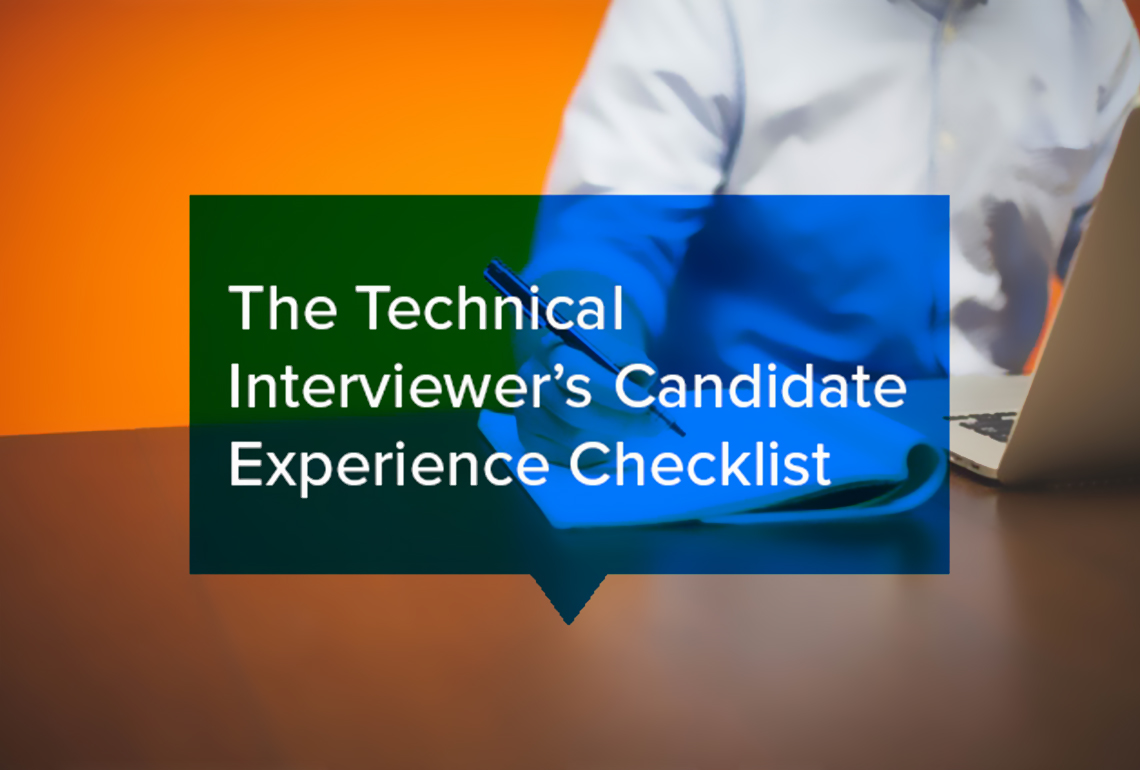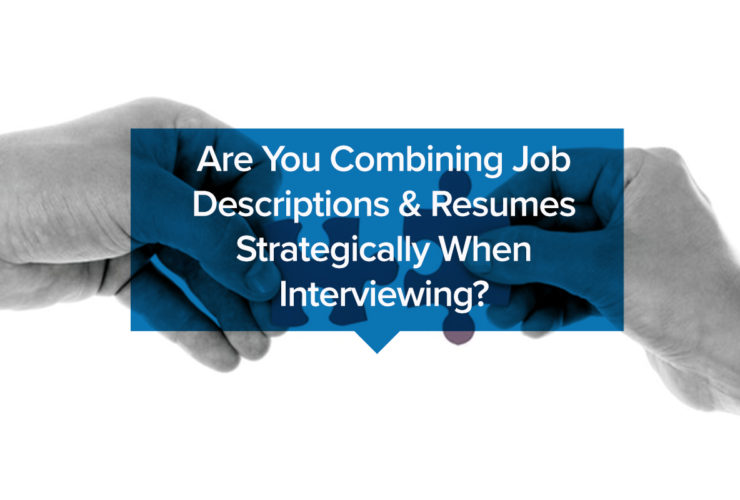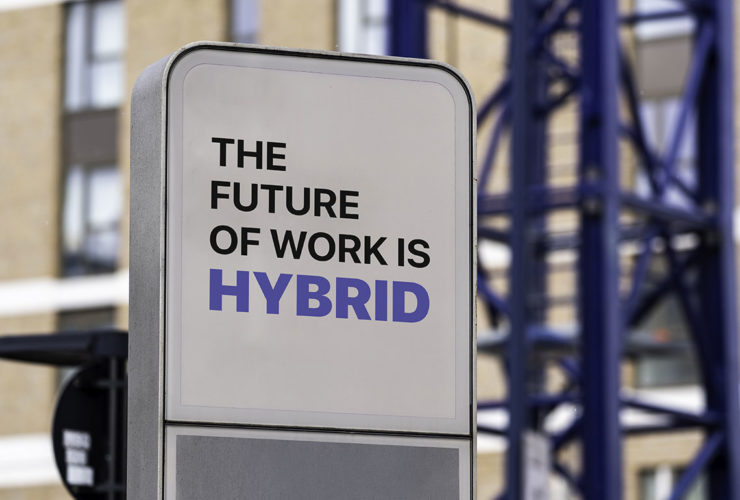As a technical interviewer, you want to:
- Give vigorous technical interviews that reveal candidates’ levels of relevant technical skills and experience for a given job.
- Provide a quality candidate experience.
Too often the candidate experience goes neglected. Yet providing a quality candidate experience means candidates are more likely to accept a job, to recommend the employer to a friend, and to consider apply for another role with the employer in the future.
To avoid neglecting the candidate experience, use this 18-item checklist. Just as a pilot uses a checklist to ensure a plane is ready for takeoff, interviewers should use this checklist to help ensure that video interviews go off without a hitch.
Before the Interview
Just because you may have abundant relevant technical experience and have performed many technical interviews, that doesn’t mean you should interview on the fly. Make sure you are prepared by checking off these items.
- My questions are ready. You know what you’re going to ask, and the topics, skills, and experiences you need to cover. Having your questions ready will help the interview go smoothly, and prevent you from forgetting to ask about an important technical topic.
- I’ve reviewed the job description and the candidate’s resume, and have them on hand. Not only will the information in the job description and resume have helped you formulate better, more relevant questions, but being able to reference the description and resume will also show the candidate that you have taken the time to prepare for the interview, creating a positive impression.
- I’ve performed a complete tech check.
-
- My video interviewing system/webcam is working properly.
- My microphone is working properly.
- If I’m using my computer’s built-in audio, I have a headset available in case the candidate has difficulty hearing me.
- I’ve performed a complete environment check.
-
- My camera is positioned correctly. Your camera is facing you straight-on, showing your shoulders and up, enabling you to have eye contact with the candidate. If your camera is positioned incorrectly either horizontally or vertically, it can be distracting for the candidate.
- I’ve verified that the lighting is adequate. You need enough lighting in the room so the candidate can see your face. A common cause of poor lighting is sitting in front of a window. For best results, have all lights on in the room and lower the blinds.
- I’ve taken steps to minimize background noise. Let people around you know that you need a quiet environment and shouldn’t be interrupted. Mute any devices that might cause distracting noises.
- I’ve identified potential distractions. It’s always possible situations could occur that will momentarily interrupt the interview—for example, a package delivery. It’s important to identify distractions ahead of time, so that during the virtual handshake at the start of the interview you can let the candidate know that the distraction might occur.
During the Interview
While the logistics of a technical interview don’t allow you to check off each item in this checklist while the interview is ongoing, it’s a good idea to keep the checklist in front of you, to check off what you can, and then review the checklist after the interview is complete.
- I’ve given a virtual handshake. Acknowledge the person before delving into the content of the interview. Also mention any potential distractions that may occur. Don’t get into small talk beyond “how are you doing today?” Technical interviewer want to stay focused on the interview.
- I’ve taken the lead. If others beside the candidate and yourself participate, such as the recruiter, let them introduce themselves. But otherwise let the candidate know you are running the interview.
- I’ve confirmed the role. Verify that both you and the candidate agree on the job position the technical interview is for. There is no need to go through the job description and requirements.
- I’ve given eye contact without staring. Show you’re interested in and listening to what the candidate is saying, without making the candidate uncomfortable.
- I’m avoided nervous habits. Don’t tap on your laptop, stretch, yawn frequently, etc.
- I’ve kept a poker face. Whether a candidate’s answer is disappointing or impressive, maintain an even keel.
- I’ve explained a behavioral example. Some candidates might not be familiar with the behavioral questions used in technical interviews. As a result, it’s important to explain to candidates that you’re looking for them to tell stories about work experiences, and that while there are no right or wrong answers, you’re going to ask probing questions about those experiences. Specifically, technical interviewer want to hear about projects they worked on, what their roles and responsibilities were, what their expectations were, how the projects turned out, and possibly some challenges they faced.
- I’ve asked a warm-up question. Start the interview with a relevant but non-stressful question. “Tell me about your most recent project” is a good example.
- I’ve provided acknowledgement. One of the benefits of giving a one-on-one interview is that you provide a human touch. Candidates are rightfully proud of their accomplishments. If a candidate talks about an accomplishment, you might say, “It sounds like that meant a lot to you.”
- I’ve shown empathy. On the other hand, if a candidate discusses a difficult or stressful situation, express empathy for them. Don’t be a robot.
- I’ve used pre-rationalization. Before asking a candidate about something negative, tell the candidate that you’re going to ask about something negative, and the reason you are asking about it. For example, before asking a candidate for a project manager role, “Have you ever called a meeting without an agenda, and if so, what was the result?,” you might say, “I’m going to ask you to admit to making a mistake. What I’m interested in is how you learned from it.” It’s also a good idea to use pre-rationalization before asking questions probing a candidate’s knowledge of and experience with a particular technical skill.
- I’ve verified that I’ve asked all the questions I needed to ask, and have taken the notes I need.
- I’ve explained next steps. Let the candidate what’s next in the process, so that he or she knows what to expect.
- I’ve given a closing virtual handshake. Thank the candidate for his or her time, and wish the candidate well.
A Good Experience
This checklist will help technical interviewer provide a stellar candidate experience, and conduct smoother technical interviews—every time. You’ll consistently be prepared, limit technical and other problems, and use quality verbal and non-verbal communication. Consider using this checklist with every technical interview.







